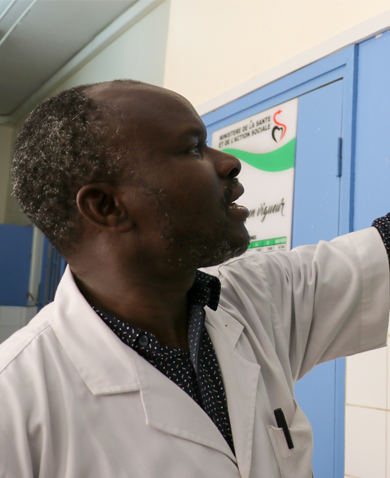Automated systems for continual improvement can transform industries. For supply chain management, our automated continual improvement system has meant more quickly identifying and mitigating risks, thoroughly addressing incidents that occur, and continually improving and bolstering our supply chain operations.

5 Reasons We Need Automation to Continually Improve Supply Chains
April 29, 2019 | 3 Minute ReadIn any global supply chain, continual improvement is vital to respond to changing technologies and mitigate risks. For a supply chain that delivers global health commodities, the stakes are even higher.
In global health supply chains, the geographic spread of delivery is often vast, the diseases we respond to are complex, and the potential risks for public health emergencies or supply chain interruptions are ever-present. This makes continual improvement that much more critical. Chemonics recognized this critical need in 2015 with the award of the $9.5 billion USAID Global Health Supply Chain Program-Procurement and Supply Management (GHSC-PSM) project. With this sizable program, we needed a streamlined approach to continual improvement and risk management. Automation helped make this possible.
When operating in different country contexts, across multiple disease sectors, and without an automated system, identifying strategic and significant trends in project incidents and potential risks is challenging. The GHSC-PSM team had to find a way to transition from a manual process for managing incidents, risks, and process improvement opportunities to a user-friendly, web-based approach that could connect teams all over the world. This inspired our continual improvement system, a platform that focuses on incident management and project risk management.
With the support of USAID, GHSC-PSM was able to work alongside Assurx, a software solutions provider, to customize this platform. Previously, we operated with hand-written forms and navigated system dependencies. This raised a common challenge faced not only in supply chain operations but across industries: human error. No matter how mission-driven the problem solver, a problematic process creates unnecessary hurdles. It’s critical for teams — especially global teams like GHSC-PSM where process breakdowns have life-threatening consequences for beneficiaries – to have a platform where staff can submit actual or potential process breakdowns for tracking, resolution, or root cause analysis and corrective actions. The continual improvement system helped us achieve exactly that, and here are five reasons why automation made it work:
- An automated system allows for stakeholders across a global project to have real-time access to the latest status of an incident or risk. This reduces the administrative burden on staff managing incidents to reply to ad hoc status update requests. At Chemonics, the Incident and Risk Management team that supports our global health and supply chain work facilitates root cause analysis, monitors agreed upon actions through to completion, and closes the incident or risk once all actions are complete. Automation allows for incident and risk managers to invest their time in these core responsibilities. Moreover, it allows the team to monitor effectiveness through incident recurrence, collect better data to do trend analysis, and provide real-time feedback to staff.
- The real-time access to incident, risk, and process improvement data enables global staff to provide up-to-date information to stakeholders. Logistics and supply chain management workforces can be enormous and widely distributed. GHSC-PSM is no different. When a field office receives an information request from the client or an implementing partner, it can’t afford to wait for headquarters — in another part of the world — to verify the latest status of an incident. With a global project, it can take more than a day to reply to these types of information requests due to time differences, resource constraints, and competing priorities. With automation, information is shared globally and in real time, enabling us to tackle challenges or mitigate risks and respond to stakeholders more quickly.
- Automation strengthens staff accountability and problem-solving. An automated continual improvement system not only allows for quicker, real-time resolution of issues through automated workflows, but it also helps boost staff accountability. It allows for proactive management of project issues before they evolve into more permanent problems.
- Enabling staff to access life-of-project data regarding incidents, risks, and process improvement opportunities in one place allows team members to better see trends across the project portfolio. Anyone with access to GHSC-PSM’s web-based platform can query for a particular funder, country, or vendor to review the incident data for trends. This helps the project better document and manage vendor performance.
- Centralizing incident data allows for better visibility, enabling project leadership to easily note trends or recurring issues. While an issue may appear small, the system allows leaders to see trends across incidents to make key decisions or prioritize actions when issues continue to reoccur.



















